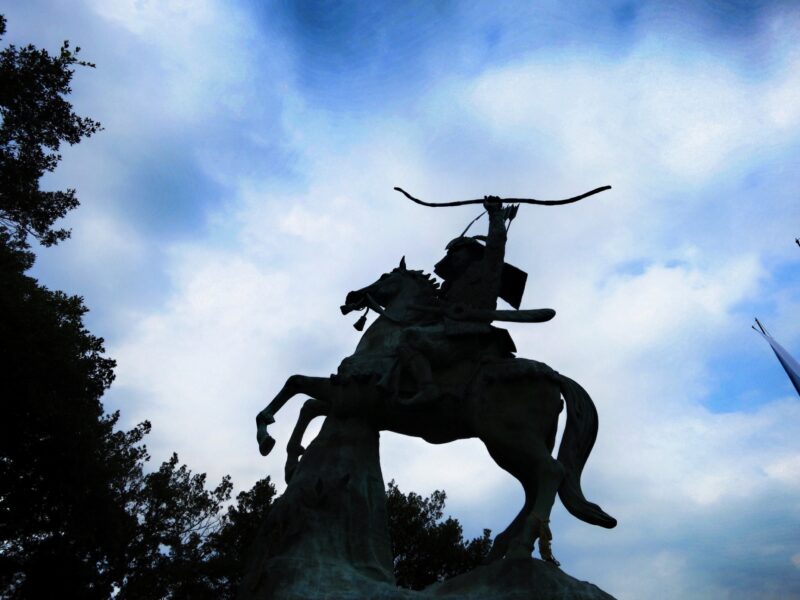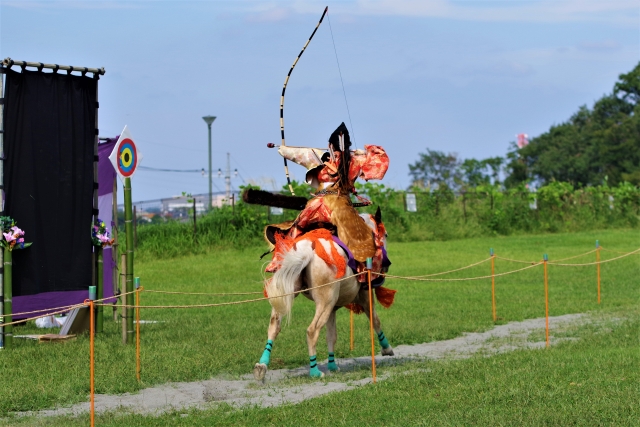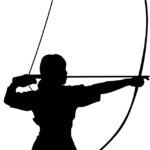When you start practicing Kyudo, don’t you find yourself focusing too much on hitting the target? It’s easy to become absorbed in refining techniques and correcting your form. While mastering the fundamentals is crucial and repetitive practice is essential, there’s more to advancing in Kyudo than just technique. Have you ever considered looking deeper into the history and spirituality of Kyudo?
- The History of Kyudo
- Prehistoric Period (Jomon Era – 10,000 years ago to 300 BCE): Early Archery Tools
- Yayoi Period (300 BCE – 300 CE): The Emergence of Long Bows
- Nara Period: The Evolution of Bow Design
- Heian to Kamakura Periods: The Rise of Bowsmanship
- The Muromachi and Sengoku Periods: The Bow in Battle and Ceremony
- The Edo Period (1603-1868): The Spread of Kyudo
- The Modern Period: Kyudo Today
- Ancient Kyudo Competitions: Inuharimono, Kasakake, and Kusashika
- The Spirituality and Philosophy of Kyudo
- Conclusion
The History of Kyudo

Kyudo evolved from the archery techniques used for warfare and hunting in ancient Japan. During the Heian period, archery was an essential part of the training for the Samurai. With the advent of firearms in the Sengoku period, the role of the bow diminished in combat but continued as a means of spiritual training. In the Edo period, archery transformed into a practice that emphasized etiquette and philosophy, and after the Meiji period, it became formalized as a martial art. Post-WWII, Kyudo grew to be recognized internationally as both a sport and a form of spiritual discipline.
Prehistoric Period (Jomon Era – 10,000 years ago to 300 BCE): Early Archery Tools
In the Jomon period, archery consisted mainly of simple short bows called Maruki Yumi made from wood, about 70 cm in length, and using stone or bone tips for arrows. These bows were primarily used for hunting purposes.
Yayoi Period (300 BCE – 300 CE): The Emergence of Long Bows
During the Yayoi period, the competition for food became intense, and bows evolved not only for hunting but also for warfare.
- The “Chōkyū” (long bow) appeared, measuring around 130 to 170 cm in length.
- Materials like the durable and resilient Inugaya and Maki trees were selected for bow construction.
- The inside of the bow was carved, and techniques such as wrapping with cherry bark were used to enhance the bow’s strength.
Nara Period: The Evolution of Bow Design
In the Nara period, the wood used for bows diversified to include Dan (sandalwood), Tsuiki (zelkova), and Haze (Japanese sumac), offering greater durability.
- Dan was known for its hardness but was difficult to process.
- Tsuiki (zelkova) was extremely durable and hard.
- Haze was light and flexible.
This period marked the beginning of specialized wood selection for bow crafting
Heian to Kamakura Periods: The Rise of Bowsmanship

In the Heian period, archery became a crucial skill for the Samurai class.
- Late Heian: The Fukutake Yumi, a bow with flat bamboo outer layers, was introduced.
- Kamakura period: The Sanmai Uchi Yumi, a further evolution of the Fukutake Yumi, was made with bamboo on both sides, making the bow more flexible and resilient.
- By the late Kamakura period, the bow’s shape evolved from a symmetrical design to one that is more asymmetrical, closer to the modern bow we use today.
Bows also became part of ceremonies and the Samurai’s etiquette. This period also saw the formation of the spiritual elements of Kyudo, exemplified by Samurai like Minamoto no Yoritomo, who sought spiritual development through archery and horseback riding.
The Muromachi and Sengoku Periods: The Bow in Battle and Ceremony
Kyudo was now deeply connected to the spiritual and ritualistic aspects of Samurai training.
The Shihō Take Yumi (four-sided bamboo bow) was introduced, enhancing the bow’s distance.
Late Sengoku period: The Yumi Tai Yumi (composite bow) was developed with wood and bamboo cores, improving the bow’s strength and shooting distance.
This period also witnessed the development of various schools of Kyudo, each with its unique teachings and practices.
The Edo Period (1603-1868): The Spread of Kyudo
With the end of warfare, the Edo period brought a time of peace and prosperity. Kyudo expanded beyond the Samurai and became a practice for the general public. Spirituality and aesthetics in Kyudo gained more emphasis, and Kyudo became recognized as both a martial art and a cultural activity. The rich cultural and spiritual aspects of Kyudo began to flourish during this time.
The Modern Period: Kyudo Today

In the Meiji period, Kyudo was formalized into a martial art with a focus not only on technique but also on spiritual growth and etiquette, becoming part of the school curriculum. After World War II, Kyudo was recognized as an international sport, with numerous competitions held both in Japan and abroad.
In modern times, materials like carbon fiber and synthetic resins have been introduced, making bows lighter and stronger, yet the fundamental philosophy and spiritual practice remain intact.
Ancient Kyudo Competitions: Inuharimono, Kasakake, and Kusashika
Inuharimono: A traditional Kyudo competition, particularly popular during the Sengoku to Edo periods, where trained dogs would be targeted with arrows.
Kasakake: A competitive Kyudo practice that began in the Heian to Kamakura periods, where shooters would aim at moving targets.
Kusashika: A form of Kyudo involving wooden targets shaped like deer, a technique dating back to ancient Japan used for testing shooting precision.
The Spirituality and Philosophy of Kyudo
In traditional Japanese martial arts, such as Kyudo, the focus is not solely on physical technique but also on spiritual development.
- Etiquette: Respect for others and the environment is key, teaching practitioners to maintain dignity and humility.
- Mental Focus: The balance of mind and body is essential. The goal is to reach a heightened state of concentration when shooting, which is considered the true essence of Kyudo.
- Meditation: Meditation is often practiced before shooting to calm the mind and increase focus. This allows the archer to aim with clarity and precision, fostering personal growth and spiritual refinement.
- Respect and Harmony: Kyudo teaches that by following the proper etiquette and showing respect to others, practitioners can foster inner peace and harmony.Self-Transcendence: Kyudo is a journey of self-improvement. It’s not just about shooting well but about transcending one’s limitations and growing spiritually.The State of Mushin: Mushin, or “no mind,” is an important concept in Kyudo, where the archer performs without distraction or attachment, simply responding to the moment.
Conclusion
Kyudo is a martial art with a history that dates back to the Jomon period, around 10,000 years ago. From its humble beginnings as a tool for hunting to its evolution into a spiritual practice, Kyudo reflects the Japanese culture’s deep connection between mind, body, and spirit. The techniques and philosophies that have developed over the centuries continue to shape Kyudo today, making it a profound and timeless discipline.
Kyudo is not just a skill to be mastered; it is a path toward spiritual growth, self-improvement, and harmony with the world around you. By exploring its history and philosophy, you can gain a deeper understanding of the true essence of Kyudo and its place in Japanese culture.

I hope this article provides you with a deeper understanding of Kyudo and inspires your journey in this beautiful and profound martial art.






